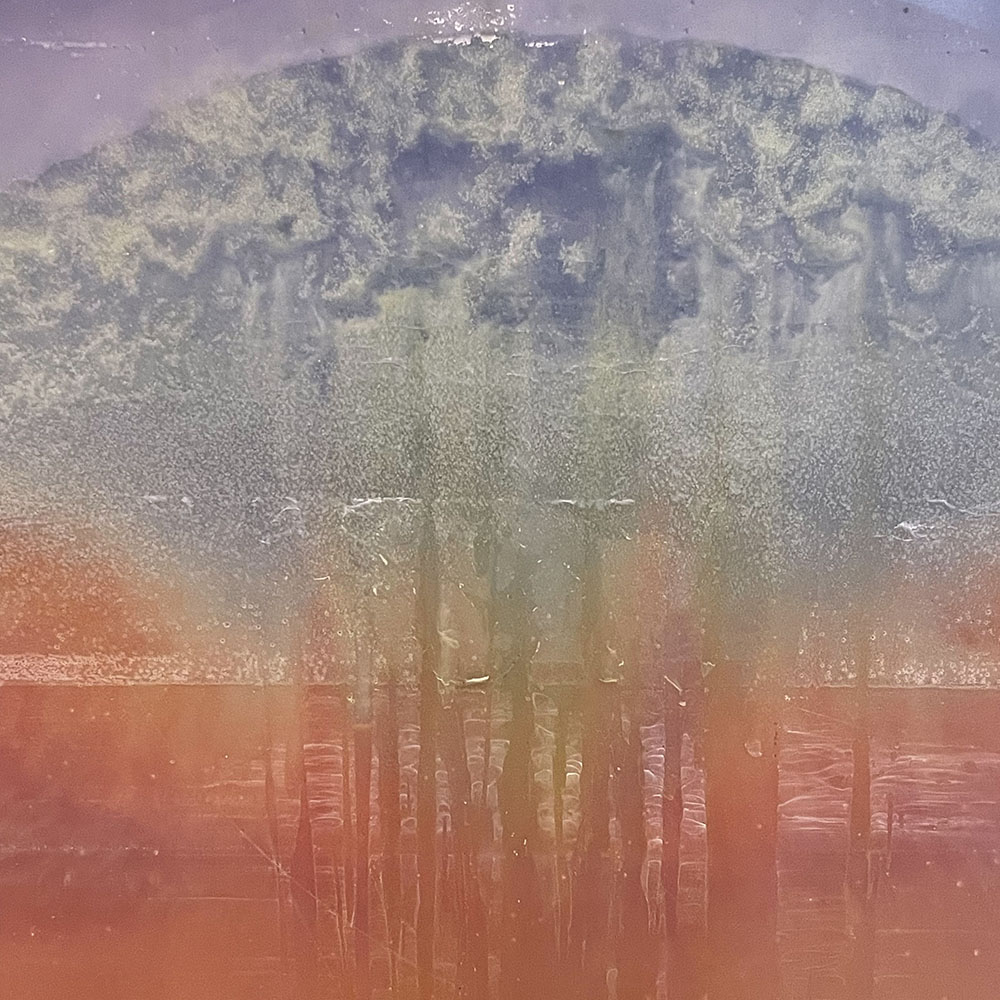
Stefano's work starts from a drive that leads him to a new perspective, trying to emancipate from pictorial aesthetics, which was becoming limiting for him.
He begins to experiment starting from plasticine and arriving at his ‘Honey Boxes’, which he understands and interprets as a natural extension of painting, in constant research on color and its rendering.
The material he uses is a mixture composed mainly of three different types of beeswax, color pigments and paraffin, which, by settling, allows the emergence of the aesthetics guided by the artist and therefore the formation of layers and shades of color (gradients).
With this technique, the artist manages to merge an anthropological act into a natural act, creating a work that generates itself every time and that cannot be replicated, as well as an interesting dialogue between artificial and natural.
IN DETAIL
Our first question to Stefano was about the procedure for making the ‘Honey Boxes’.
First, he uses the "lost wax technique", after which the "mixture" obtained (consisting of three types of beeswax, color pigments and paraffin) is melted in aluminum trays.
The melted mixture is then divided into blocks according to the color obtained and poured into a mold, where it is allowed to solidify. The colors obtained are previously selected and conveyed by the artist.
Stefano is also experimenting on the size and layout of his sculptures, thinking about the best forms of support, both from a functional point of view and, as regards the aesthetic result, a fundamental element in the artist's approach.
He begins to experiment starting from plasticine and arriving at his ‘Honey Boxes’, which he understands and interprets as a natural extension of painting, in constant research on color and its rendering.
The material he uses is a mixture composed mainly of three different types of beeswax, color pigments and paraffin, which, by settling, allows the emergence of the aesthetics guided by the artist and therefore the formation of layers and shades of color (gradients).
With this technique, the artist manages to merge an anthropological act into a natural act, creating a work that generates itself every time and that cannot be replicated, as well as an interesting dialogue between artificial and natural.
IN DETAIL
Our first question to Stefano was about the procedure for making the ‘Honey Boxes’.
First, he uses the "lost wax technique", after which the "mixture" obtained (consisting of three types of beeswax, color pigments and paraffin) is melted in aluminum trays.
The melted mixture is then divided into blocks according to the color obtained and poured into a mold, where it is allowed to solidify. The colors obtained are previously selected and conveyed by the artist.
Stefano is also experimenting on the size and layout of his sculptures, thinking about the best forms of support, both from a functional point of view and, as regards the aesthetic result, a fundamental element in the artist's approach.
